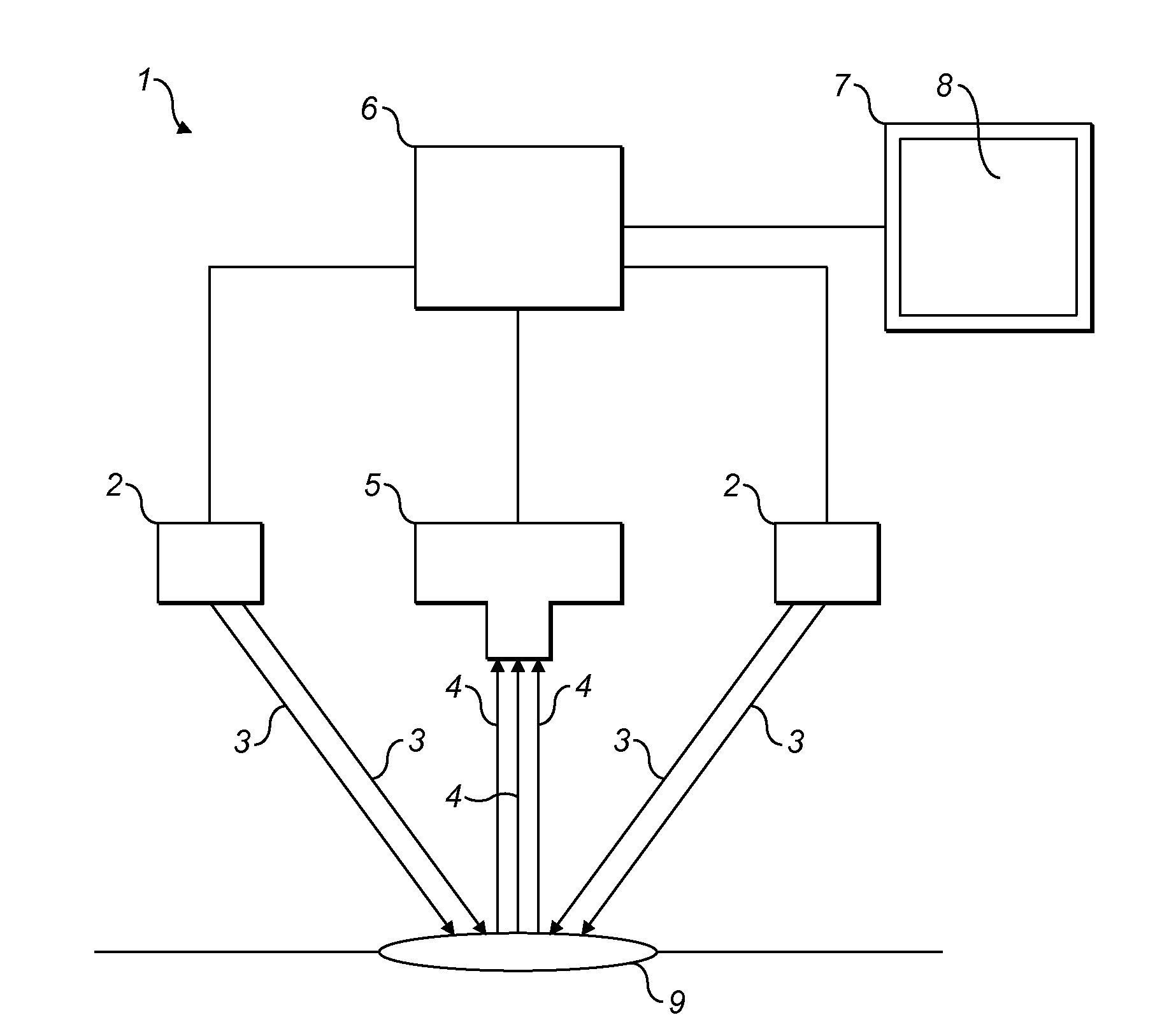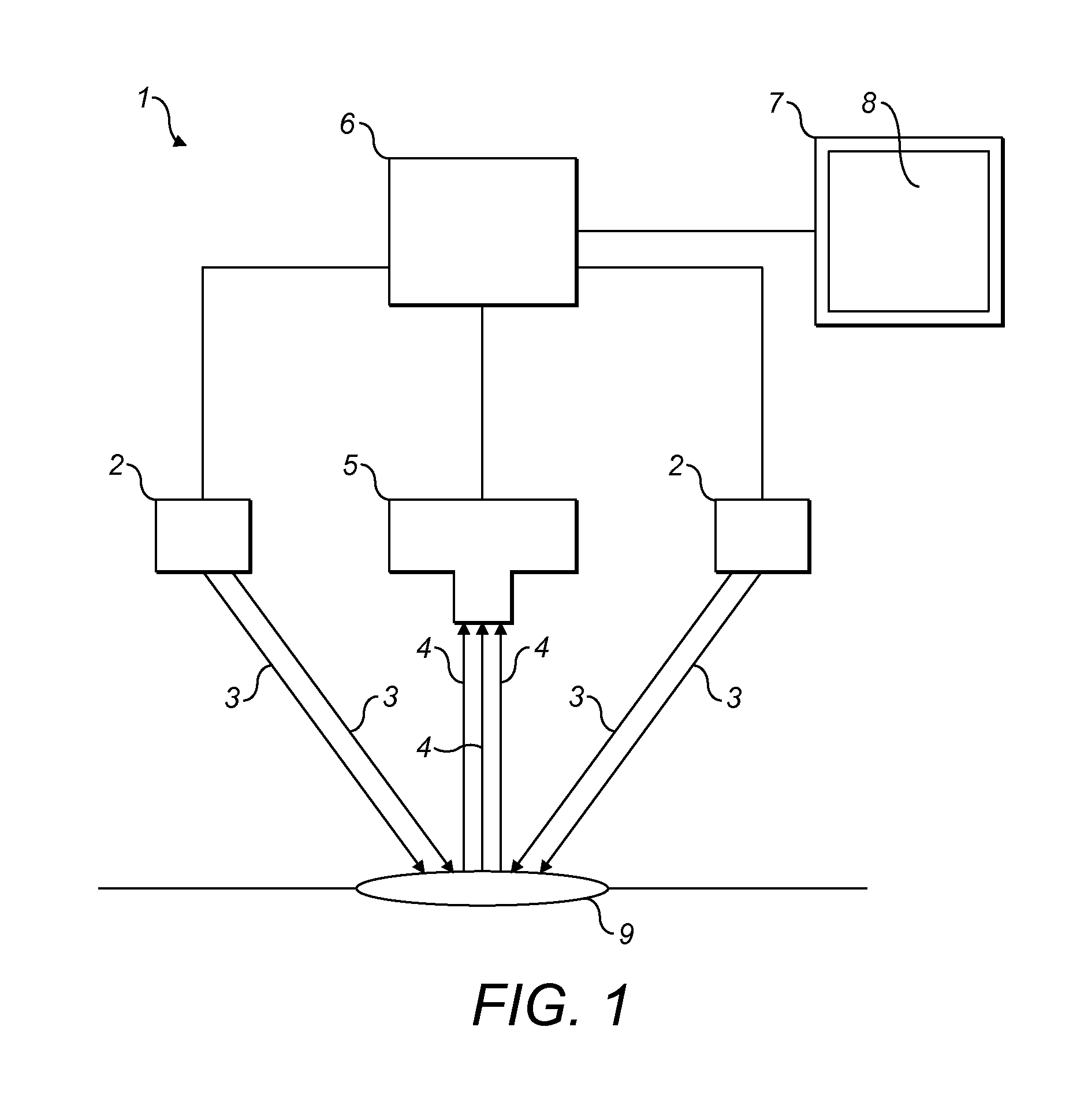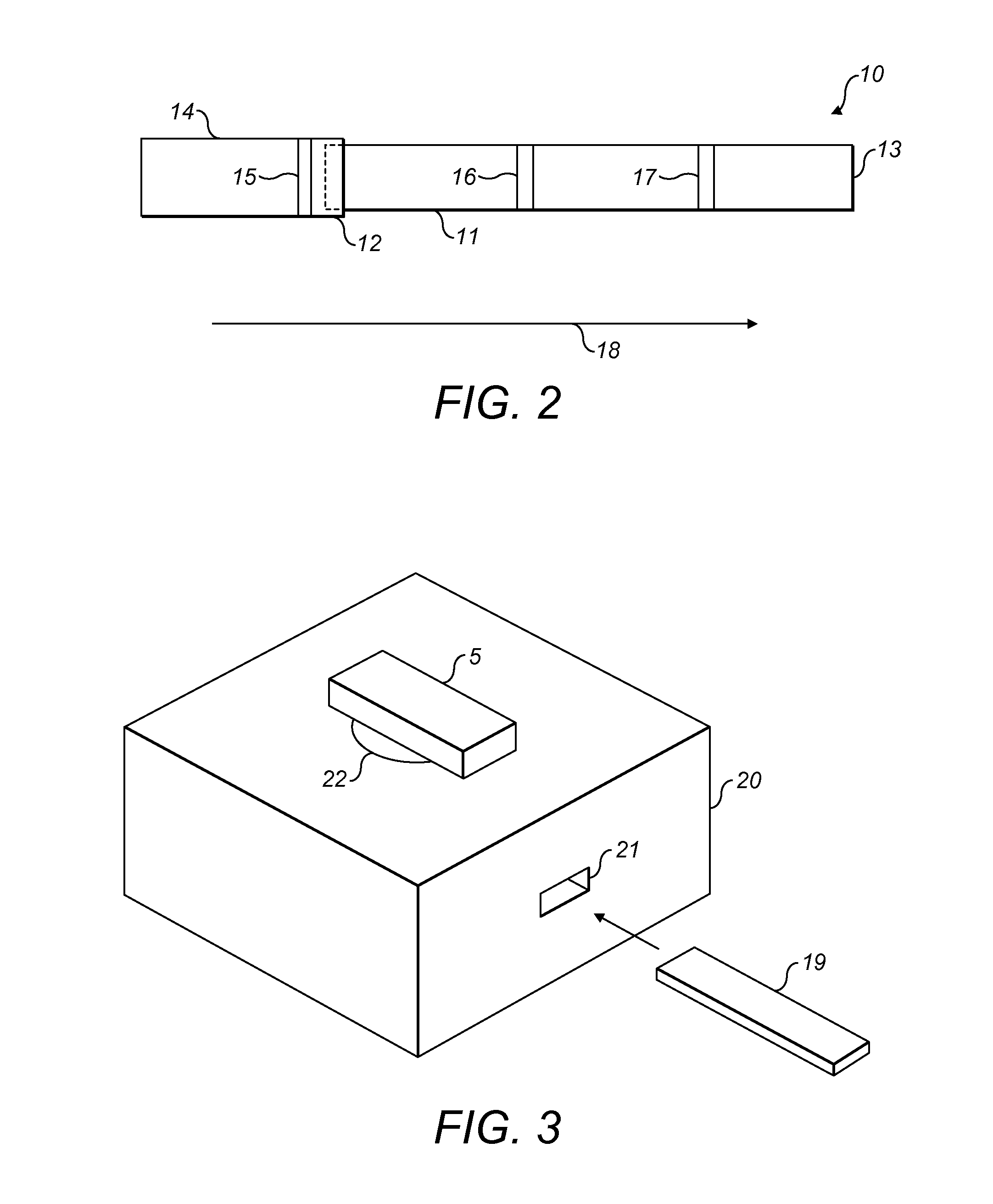Imaging method
a technology of imaging method and sensor, which is applied in the field of wound imaging, can solve the problems of inability to determine absolute, inability to accurately determine absolute, and inability to achieve reliable data from imaging techniques, etc., and achieves the effect of convenient positioning of test substrates, convenient alignment of sensors, and convenient alignment of sensors
- Summary
- Abstract
- Description
- Claims
- Application Information
AI Technical Summary
Benefits of technology
Problems solved by technology
Method used
Image
Examples
Embodiment Construction
[0070]In a first embodiment of the present invention, as shown in FIG. 1, there is provided a device 1 for imaging a wound 9. The device 1 comprises first and second banks of light emitting diodes (LEDs) 2 each with a narrow band emission of 600 nm±5 nm. Located between the first and second banks of LEDs 2 there is provided a monochrome digital camera 5 which is capable of detecting light having a wavelength of between 400 nm and 1000 nm and generating a signal indicative of the intensity of the detected light. As is typical for digital cameras known in the art, the camera comprises an array of pixels, each pixel being independently sensitive to incident light and a lens arrangement for focussing incoming light on the array. The signal generated by the camera contains an indication of the intensity of the light at each pixel in the array and therefore the information necessary to generate a monochrome image of the view at which it is directed.
[0071]The first and second LED banks 2 a...
PUM
 Login to View More
Login to View More Abstract
Description
Claims
Application Information
 Login to View More
Login to View More - R&D
- Intellectual Property
- Life Sciences
- Materials
- Tech Scout
- Unparalleled Data Quality
- Higher Quality Content
- 60% Fewer Hallucinations
Browse by: Latest US Patents, China's latest patents, Technical Efficacy Thesaurus, Application Domain, Technology Topic, Popular Technical Reports.
© 2025 PatSnap. All rights reserved.Legal|Privacy policy|Modern Slavery Act Transparency Statement|Sitemap|About US| Contact US: help@patsnap.com



